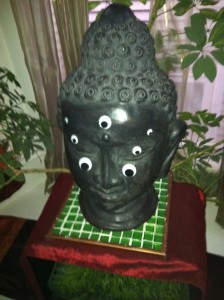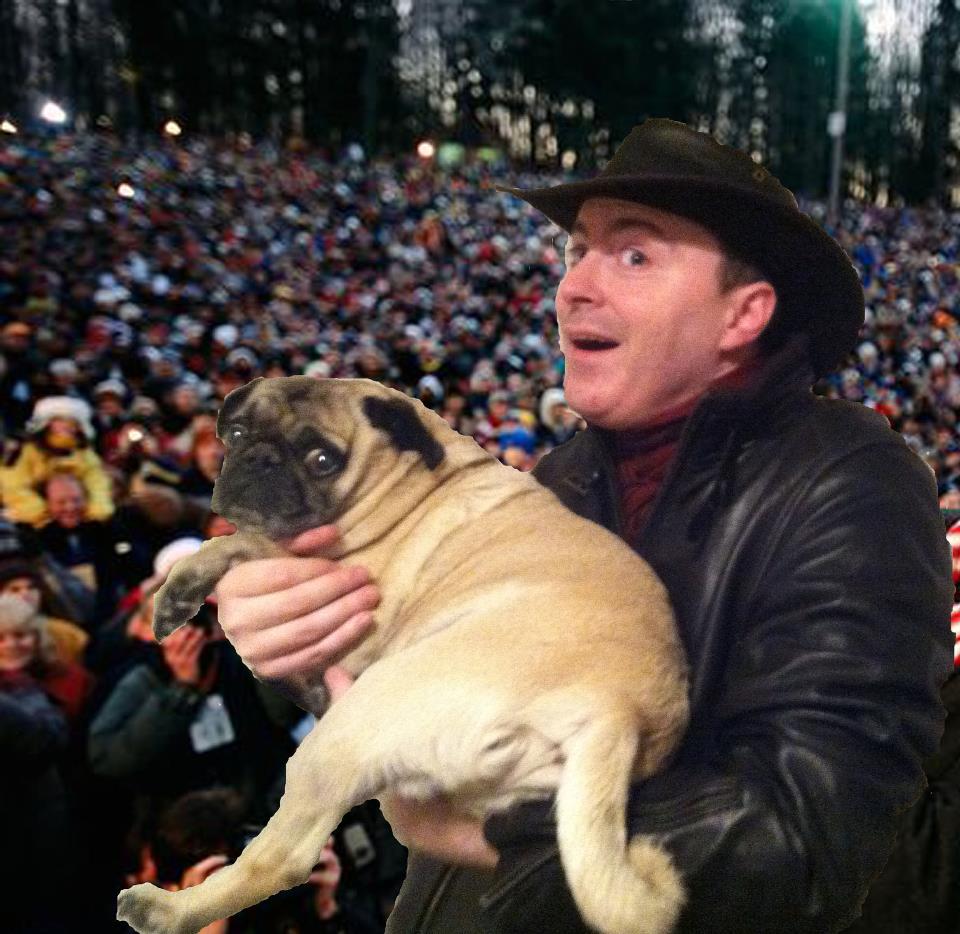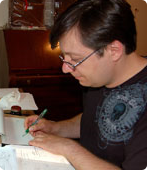It’s been awhile since I’ve done an Eberron Q&A, largely because I’ve been spending most of my spare time working on my new setting, codenamed Codex (working title only – it’s my Blue Harvest). But I don’t want to neglect Eberron, and a few of these questions segue into my upcoming Codex post. As always, my answers are just my opinion and may contradict canon sources: it’s up to you to decide what to use!
If there were anything you’d change about as-published Eberron, what would it be? What would you add or expand?
Lots of things. I wish we’d had more space to talk about the planes and undersea nations. I’d like more information about the spells and weapons used during the Last War, and more information about what war in Eberron actually looks like (and how these things could affect a post-war story). I wish we’d been able to provide more support for goblins as PCs. I wish we’d gotten the scale right on the original map of Khorvaire. Most of these are practical things that I believe would improve the setting for other players & DMs. There’s other changes that are more about what I want in a world, but don’t necessarily serve anyone else’s needs. I’d like the history of Galifar to have been shorter and a little more dramatic. I’d like more restrictions on resurrection and more of an exploration of its impact on society. There are lots of other little details like this, but they’re more for my peace of mind than because they interfere with people’s ability to enjoy the world.
As you progress in future RPGs/settings/etc, are there themes you tried exploring in Eberron that you’ll try to explore more?
Certainly. Looking at just a few…
- The Impact of Magic on a Society. Any time I’m working on a world or system that involves magic, I want to seriously consider its impact on the world around it, and how it could be incorporated into a culture. Codex is at a different point in the history of magic than Eberron, and there’s more of a breakdown of different cultures employing different forms/schools of magic. But the basic idea—if magic exists and is reliable, how will it change the world—is definitely there.
- War. There are many different ways in which war can generate stories. Eberron dealt with a civil war shattering a major kingdom. Codex will do something different… but war and its impact on the people caught up in it is certainly a theme that will be present.
- Dreams. I’ve always loved exploring dreams. The very first RPG piece I had published was essentially Inception rules for Over The Edge. I wrote Oneiromancy rules for Atlas Games’ Occult Lore. Eberron plays with the Dreaming Dark and the Kalashtar. Codex is going in a different direction, but dreams have a role in the world.
- Divine Mysteries and the Importance of Faith. Codex takes a very different approach to the divine than Eberron does. But it is still a world in which faith matters, where the absolute nature of the divine remains a mystery to mortals.
- Shades of Gray. There’s always a place for the cut-and-dried pulp villain; when you fight the Emerald Claw, you generally know you’re doing the right thing. But as a noir fan, I want the world as a whole to be less black and white.
That’s just off the top of my head. I like conspiracies and intrigue, so you can be sure you’ll see a lot of schemes going on. I like to think about monsters—what are their cultures and drives? If I took another ten minutes, I’d likely come up with ten more answers, but I’ll get to those in the future.
Do the Five Nations have or seek to have colonies?
Colonization isn’t a strong theme in Eberron. By the numbers, the Five Nations aren’t even fully utilizing the land they currently claim; there’s no desperate need for new land. Beyond that, there’s not a lot of appealing land to colonize. Sarlona and Argonnessen are already taken, the Frostfell is hardly appealing, and Xen’drik is a cursed, twisted land full of dangerous things.
With that said, colonization and exploration are themes I’ll be exploring in Codex.
The Silver Flame infamously conducted a pogrom vs. lycanthropes. Has it similarly campaigned against other supernatural types?
Sure. Remember all those demon overlords trapped in Khyber? They’re the end result of the very first Silver Flame pogrom versus a supernatural threat. Of course, that predates HUMAN worship of the Silver Flame. In modern times, there’s nothing on par with the purge of lycanthropy, but in part that’s because there’s never been a threat that called for it. The Purge was a response to a massive outbreak of infectious lycanthropy; if left unchecked, this would have consumed and destroyed human civilization on Khorvaire. The forces of the Flame met this head on, and once it was broken, took steps to eliminate it completely. If there was, say, a zombie apocalypse, they’d act with the same ruthless efficiency to hunt down and destroy all vectors of zombie infection. There hasn’t been such a large-scale obvious threat, and so we haven’t seen such a thing. But on a smaller scale, the Silver Flame is CONSTANTLY campaigning against supernatural threats. That’s the purpose of the Templars: Protect the innocent from supernatural evil. Are there ghouls in the graveyard? The templars will check it out when they arrive. Is Dela possessed? Call for an exorcist of the Silver Flame! People often see the Silver Flame as intolerant or overzealous, but it’s important to remember that Eberron is a world where there ARE rakshasa, vampires, and demons abroad in the world, where you could be possessed or where evil from Khyber could burst onto the surface at any time. If it does, the Templars are charged to face it and if necessary, to lay down their lives to protect you from it.
Is there a Cannith family tree w/the prominent family member’s dates of birth/death & so on? How old was Norran when he died?
I’ve never encountered or constructed a full Cannith family tree. I don’t believe there’s a canon source as to Norran’s age, so it’s up to you to decide what best suits your story.
Also would warforged eventually expire if sealed in a vault? If Cannith seals unwanted creations up, do they last forever?
Warforged don’t need to eat, drink, or breathe. As such, a warforged could survive for a very, very long time if it was sealed in a vault. Do they last FOREVER? That depends on the environment. If you stored a suit of armor in this vault, would it still be intact and usable in a century? If the answer is “yes,” than a warforged stored in a similar way would also survive. If the environment lends itself to decay and corrosion, and if circumstances prevent the warforged from maintaining itself, it could fall pray to rot or corrosion. On the other hand, if it’s capable of moving and tending to itself, it could probably hold these things at bay. As defined, warforged have no set “expiration date,” and there are canon sources that deal with warforged created during the Age of Giants that are still operational.
Can a rakshasa truly worship the Silver Flame? If not, why don’t Silver Flame priests detect the evilness of disguised rakshasa?
This question originally dealt with the plot of a specific novel; to avoid spoilers, I’m addressing the general point. First, I don’t believe that a rakshasa can truly worship the Silver Flame… because if it does, it will cease to be a rakshasa and become something else. Immortal fiends are essentially incarnate ideas; if the idea changes substantially, I maintain that the creature will become something entirely different. A fallen angel becomes a radiant idol or a devil. A “risen” rakshasa would likewise take on a new form… perhaps that of a deva.
Given this, how do undercover rakshasa avoid detection? They have to be able to duplicate the powers of the roles they seek to fill. A rakshasa posing as a silver pyromancer has to learn some way to make his magic LOOK like that of a true silver pyromancer, even if it’s not. However, the Lords of Dust have had tens of thousands of years to work on this. They have access to epic level spellcasters and hordes of treasure amassed since the dawn of time… so they can use magic items to help their disguises. One of the most important of these is the Mask of the Misplaced Aura, described on page 170 of Sharn: City of Towers; this is an amulet that gives the wearer a different aura for purposes of divination. So a rakshasa could have a MotMA that makes him show up as a 10th level lawful good cleric, even though he’s actually a 12th level lawful evil sorcerer/outsider.
What would change if the Twelve creates some magic equivalent firearms just for dragonmarked heirs?
It depends how effective they are compared to other weapons, from crossbows to eternal wands. Can they by any dragonmarked heir, or just one with a dragonmark? Do they require martial training, or are they mystically accurate (more like a longbow or a wand of magic missiles)? What’s the range? Do they automatically penetrate armor? How expensive are they—can every heir have them, or are they as rare as high-level sorcerers?
One of the underlying themes of Eberron is the uneasy balance of power between the nobility and the dragonmarked houses; the military power of the houses has been held in check by the Korth Edicts. If the houses acquire this new tool, there is the chance for them to be seen as a new military threat. I expect that the Five Nations would seek to ban them, just as they shut down Cannith’s creation forges. The question is if the Twelve would defy them, and what would happen if they do. Will all the houses stand together behind the Twelve, or would some break ranks? Are the nations prepared to forgo the services of the houses to enforce this point? Might they convince the Church of the Silver Flame that these firearmed dragonmarked heirs are a supernatural threat that endangers the innocent?
Ultimately, I think the answer largely depends on diplomacy and how these things are used. If they are used sparingly and in accord with the laws of the land, they might go largely unnoticed. On the other hand, if the houses flaunt them and engage in acts of aggression, it’s possible you could have an entirely different sort of Next War on your hands.
You mentioned a pulp hero named The Beholder. Would he be more like Batman or The Shadow?
The Beholder and her tagline (“No evil escapes the eyes of the Beholder!”) was inspired by the Shadow. The Beholder was a kalashtar with an assortment of agents (her “eyes”) she could communicate with telepathically to coordinate her war on the villains of Sharn.
Why may Aereni be interesting villains?
Hmm. The members of the Undying Court are tens of thousands of years old. They are one of the few forces who are capable of interpreting the Draconic Prophecy. Together, they wield divine power on par with the Silver Flame, if not as far reaching. They are capable of ruthless action in pursuit of their own interests, as shown by the extermination of the Line of Vol. Their power is limited beyond Aerenal, but can still be channeled through their priests and paladins. So, here’s a few ideas.
- Take a page from Fringe. The Undying Court has been watching humanity for thousands of years. Now it acts. Through some unknown method, the Court extends its power to (Sharn/Stormreach/wherever), allowing them to wield their full divine power in this region. This allows them to shatter any organized military force that challenges them. Aereni soldiers commanded by deathless paladins seize control of the region and place it under martial law. They are constructing eldritch machines that will extend the range of their powers and allow the Ascendant Counselors to leave Shae Mordai. First off, WHY? Are they trying to save humanity from itself? Is this really an attack on the Lords of Dust/Chamber/Erandis Vol, who were about to do something big in the area?
- Take it on a smaller scale. Aerenal decides that it won’t put up with the people of Khorvaire providing aid and support for its enemies (Erandis and the Emerald Claw). It begins to send military strike teams into the Five Nations to attack the Emerald Claw, and to hit areas with divine strikes. Aerenal considers these actions fully justified and is unconcerned about collateral damage. As an adventurer, you can easily get caught up in conflict with these forces, especially if you have any attachments to the Blood of Vol. Do you fight them? Strike back at Aerenal? Or try to help them finish their mission as quickly and efficiently as possible to minimize collateral damage?
- If you’re an elf, chances are your ancestors at least passed through Aerenal. That means the Court knows something about you. Perhaps you have an ancestor on the Court. Or you have an ancient enemy on the Court who has been slowly eliminating your entire line. He’s finally gotten around to you. He’s coordinating strikes from Shae Mordai. Not only do you not know who he is, you don’t know the basis for the feud. Can you find the answers to these questions before it’s too late? How do you reach him in Shae Mordai?
Our local group is trying to get a better understanding of airships, which has made us curious about some of the choices used. In the campaign setting book airships use fire elementals and galleons use air elementals. It just doesn’t make sense to us. Why not just use air elementals for both ships?
A galleon uses an air elemental to generate wind which it harnesses with sails. The fire elemental works more like a rocket. With that said, some airships do employ air elementals; Pride of the Kraken from Principles of Fire used both an air and fire elemental.
I have been doing some research on flying fortresses. In doing so I stumbled across a forum post that was speaking about the command center. The post mentioned that it uses three bound elementals, earth, air, and fire. How does an earth elemental aid the flying fortress?
I don’t believe it’s my post, so I can’t say what the original author intended. However, I could see it as possibly being less about the interaction with the earth and more about enhancing the structural stability of the vessel.
If an elemental vessel loses its bound shard or it becomes damaged can it be repaired? Better yet can it be replaced?
Provided that it survives the experience, sure. If someone removes it while it’s docked, it could be replaced. And a galleon could lose its shard and continue under normal windpower. However, a large airship that loses its shard while in motion is going to crash, so a new shard is the least of your repair issues.
If shards are replaceable, would it then be possible to have a vessel that could swap crystals to take on different traits?
I don’t see why not. This would be an argument for a ship with multiple bound elementals—so you could still have one active to maintain the stability of the vessel while you switch out the other.
It seems that all of the Eberron publications only intend for the core elementals (air, earth, fire, and water) to be bound? Do you have plans for the other elementals? I know I do. Is it possible that they can’t be bound?
I think any elemental should be able to be bound. I have no plans for them, but I certainly encourage you to run with the idea.
Besides Q&A it would be cool if you write short Eberron stories (FR authors do it).
I don’t know what FR authors do, but there’s a few factors here.
First, Eberron is the intellectual property of Wizards of the Coast. If I wrote an Eberron story, they would be within their rights to order me to take it down or change it. Would they? I don’t know. But they COULD. There’s been issues in the past as to whether I could post an Eberron adventure on my site. And there’s certainly no way I could sell an Eberron story.
This ties to point number two, which is time. I don’t have a whole lot of it, and the freelance RPG business isn’t the most lucrative job in the world. As a result, I need to focus the time that I have on projects that I feel are going somewhere. I’d LIKE to finish the stories of Thorn and Daine and Lei. But those stories belong to WotC, and I can’t afford to work on a story that not only can’t I sell, but that I might not even be able to post for free. Hence my working on Codex. I want to work on something that I know I can expand. So I’d be thrilled if WotC authorizes me to do more Eberron fiction. But it’s not something I’m comfortable investing time in without that authorization.








